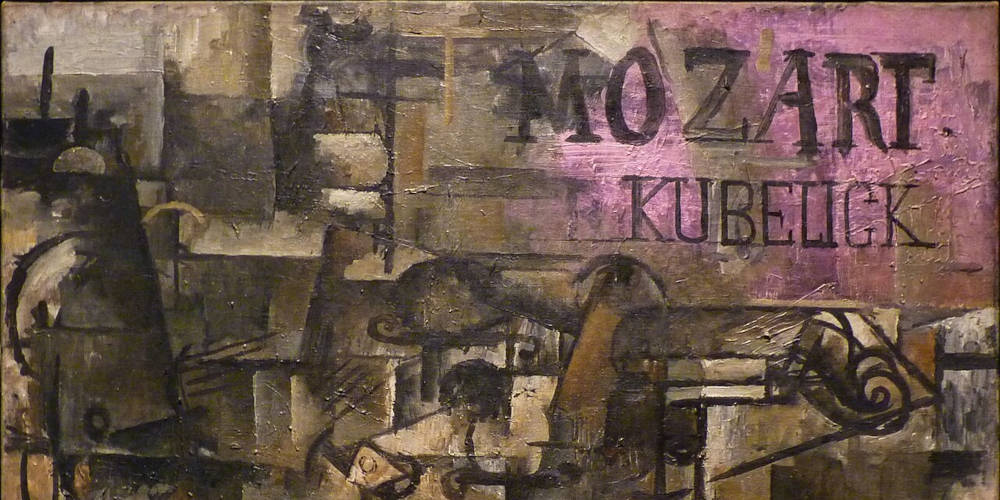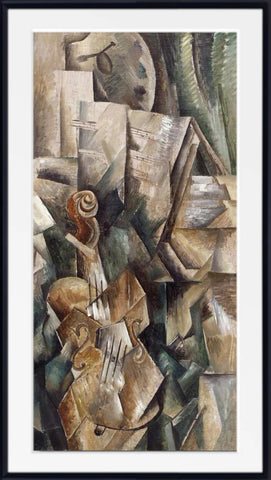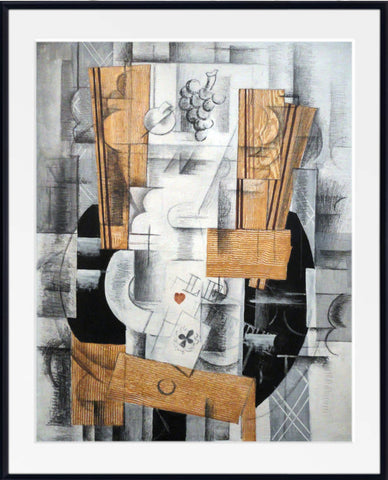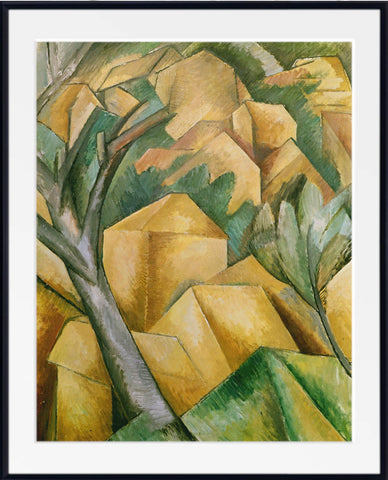Table of Contents:[hide]
Art has a unique power: it can challenge perceptions, break boundaries, and revolutionize the way we view the world. One artist who epitomized this transformative ability was Georges Braque, a visionary Cubist painter whose work reshaped the art landscape in the early 20th century.
I. Introduction: A Glimpse into the Artistic Revolution
A. Early Life and Influences
Georges Braque was born in Argenteuil, France, in 1882. Growing up surrounded by the vibrant colors of post-impressionist paintings, Braque’s passion for art ignited at a young age. Influenced by masters like Paul Cézanne and Pablo Picasso, Braque's artistic journey was destined for greatness.
B. Emergence of Cubism
In the early 1900s, Braque and Picasso, two artistic pioneers, embarked on a journey that would change the course of art history forever. Their collaboration gave birth to Cubism, an avant-garde movement that shattered traditional artistic norms.
II. The Birth of a Revolutionary Art Form: Cubism Defined
A. Understanding Cubism
Cubism, characterized by fragmented forms and abstract geometries, had two distinct phases: Analytical Cubism, marked by intricate deconstructions, and Synthetic Cubism, featuring vibrant collages. These phases redefined the essence of artistic expression.
B. Collaboration with Picasso: The Cubist Movement
Braque and Picasso's partnership was the epicenter of the Cubist movement. Their artistic synergy led to the creation of groundbreaking artworks that challenged the very fabric of reality.
III. Braque's Masterpieces: Breaking Down the Cubist Canvas
A. Violin and Palette (Violon et palette, Dans l'atelier)
"Violin and Palette" not only encapsulates Braque's brilliance but also underscores his enduring influence on modern art. Cubist techniques, as exemplified in this painting, inspired generations of artists to explore abstraction, perspective, and the manipulation of form. Braque's legacy reverberates in the works of abstract and contemporary artists, affirming the timeless relevance of his Cubist innovations.
B. "Nature morte (Fruit Dish, Ace of Clubs)"
"Nature morte (Fruit Dish, Ace of Clubs)," painted in 1913, epitomizes the core principles of Cubism. This artwork, also known as "Nature morte sur une table," delves into the intricacies of Braque's creative vision, offering viewers a glimpse into the revolutionary Cubist movement.
C. "Houses at L’Estaque"
"Houses at L’Estaque" captures Braque's fascination with architecture. The painting's intricate layers and bold colors reflect the artist's innovative approach to depicting the world around him.
IV. Impact on the Art World: Cubism's Far-reaching Influence
A. Cubism's Influence on Contemporary Art
Cubism's influence extended far beyond Braque's era, shaping the works of renowned artists like Juan Gris and Fernand Léger. Its impact on abstract art and surrealism laid the foundation for future artistic movements.
B. Braque's Legacy in Modern Art Movements
Braque's legacy continued to inspire generations of artists. His innovative techniques and bold experimentation became guiding principles for those seeking to challenge artistic norms and embrace creative freedom.
V. Braque’s Techniques: Deconstructing Reality with Brushstrokes
A. Use of Geometric Shapes and Forms
Braque's meticulous use of geometric shapes and forms defined the Cubist aesthetic. His paintings, characterized by fragmented planes and intricate details, invited viewers to engage in a dialogue with the artwork.
B. Exploration of Color and Texture
Color and texture were fundamental elements of Braque's artistry. His subtle palette choices and textured surfaces added depth to his paintings, creating a multisensory experience for the observer.
VI. Personal Life and Struggles: The Man Behind the Canvas
A. Braque’s World Outside Art
Beyond his artistic endeavors, Braque led a private life filled with passion for literature, music, and nature. These interests profoundly influenced his artistic vision, enriching the layers of complexity in his work.
B. Coping with World War I and II
The tumultuous periods of World War I and II tested Braque's resilience. Despite the challenges, his art remained a beacon of hope, reflecting the human spirit's ability to endure and find solace in creativity.
VII. Recognition and Awards: Celebrating Braque's Artistic Genius
A. Notable Awards and Honors
Braque's contributions to the art world were acknowledged with prestigious awards, including the Grand Prize for Painting at the Venice Biennale. These accolades affirmed his status as a pioneering force in modern art.
B. Critical Acclaim and Exhibitions
Critics and art enthusiasts alike praised Braque's innovative approach. His works were showcased in prominent exhibitions, allowing audiences worldwide to witness the brilliance of his Cubist creations.
VIII. Conclusion: Georges Braque's Enduring Impact on Art
A. Recapitulation of Braque's Journey
Georges Braque's artistic journey was a testament to the power of imagination and innovation. His ability to deconstruct reality and reconstruct it through a Cubist lens challenged artistic norms and inspired future generations.
B. Emphasizing Cubism's Timeless Relevance
Cubism, as pioneered by Braque, continues to captivate audiences today. Its influence echoes in contemporary art, reminding us of the boundless possibilities that emerge when artists dare to defy conventions.
IX. Frequently Asked Questions (FAQs) About Georges Braque and Cubism
-
Q: Who was Georges Braque, and what is he famous for?
A: Georges Braque was a renowned French painter and sculptor, best known as one of the pioneers of the Cubist movement in art. He co-founded Cubism along with Pablo Picasso, revolutionizing artistic representation in the early 20th century.
-
Q: What is Cubism, and how did Georges Braque contribute to it?
A: Cubism is an avant-garde art movement characterized by the use of geometric shapes, fragmented forms, and abstract representations. Georges Braque played a significant role in the development of Cubism, working closely with Picasso to deconstruct traditional artistic perspectives and explore new ways of portraying reality.
-
Q: What are the key characteristics of Braque's Cubist paintings?
A: Braque's Cubist paintings are marked by the use of geometric shapes like cubes, cones, and spheres to represent objects and figures. He often utilized a muted color palette and intricate textures, creating a sense of depth and complexity in his artworks.
-
Q: What are some famous artworks by Georges Braque in the Cubist style?
A: Some iconic Cubist paintings by Braque include "Violin and Candlestick," "Man with a Guitar," and "Houses at L’Estaque." These artworks showcase his mastery in deconstructing everyday objects and reimagining them in a Cubist framework.
-
Q: How did Georges Braque's collaboration with Picasso influence Cubism?
A: The collaboration between Braque and Picasso was pivotal in the development of Cubism. They shared ideas, techniques, and artistic visions, leading to the creation of groundbreaking artworks. Their partnership allowed Cubism to flourish, influencing generations of artists.
-
Q: What was Braque's artistic philosophy, and how did it shape his Cubist creations?
A: Braque believed in exploring the essence of objects beyond their traditional representation. His Cubist philosophy involved breaking down complex subjects into basic geometric forms, encouraging viewers to engage with the artwork intellectually and emotionally.
-
Q: What impact did Georges Braque and Cubism have on the art world?
A: Georges Braque and Cubism had a profound impact on the art world, challenging established norms and inspiring artists to experiment with new techniques. Cubism's influence extended to various art forms, including painting, sculpture, literature, and architecture.
-
Q: How did Braque's personal experiences influence his Cubist artworks?
A: Braque's personal interests in literature, music, and nature deeply influenced his artistic expression. These influences added layers of complexity and symbolism to his Cubist artworks, making them rich in meaning and interpretation.
-
Q: What recognition and awards did Georges Braque receive during his lifetime?
A: Braque received several prestigious awards, including the Grand Prize for Painting at the Venice Biennale. His innovative approach to art and contributions to the Cubist movement were widely recognized by critics and art institutions.
-
Q: Is Cubism still relevant in contemporary art?
A: Yes, Cubism remains relevant in contemporary art. Its influence can be seen in the works of many modern artists who continue to explore abstract and geometric forms. Cubism's legacy endures as a source of inspiration for artistic experimentation and creative expression.




